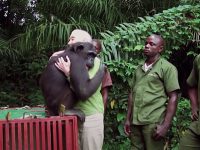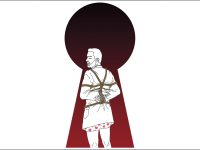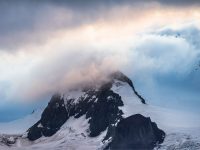Voyages of Discovery
Overcoming limits

[…] Pray that the road is long,
full of adventure, full of knowledge.
[…] To learn and learn from scholars.
Constantine P. Cavafy, Ithaca, 1911
[translation George Barbanis]
Rarely has anyone expressed as beautifully as Cavafy did the value of travel as a knowledge enriching experience. Of course he was not the first; the very title of the poem refers to us as a prior literary monument: Homer’s Odyssey and the mythical journey made by Odysseus and his companions back to Ithaca after the Trojan War.
Every journey, even the most trivial, has an element of discovery, both in terms of discovering the outside world and the traveller’s self-discovery. For some travellers, however, discovery is the very purpose of their journey. From Herodotus to Darwin and La Condamine to Neil Armstrong, hundreds of travellers have sought their Ithaca. For some, Ithaca was an island or a continent, while for others it was something abstract, like a meridian or a Pole, or for others a theory, like evolution. Here we will take a glimpse of some of these travellers.
«The primary targets of these journeys were not scientific, but commercial and political, and therefore many of these discoveries were kept secret»
From Herodotus to Columbus
We will start with Herodotus; not because he was the first, who knows who was the first. When Herodotus described the countries he visited in The Histories, they had long been visited by Greek sailors and Phoenician traders. For centuries these seafarers had crossed the entire Mediterranean and the Black Sea, and travelled across Egypt and Persia, reaching distant horizons (Boardman 1988). The Phoenicians had even crossed the Strait of Gibraltar (the legendary Pillars of Hercules) and had sailed the Atlantic Ocean north and southward. And at the other end of the world, in the Pacific Ocean, daring people had left Southeast Asia to colonize the thousands of islands scattered throughout this ocean (Parry, 1981).
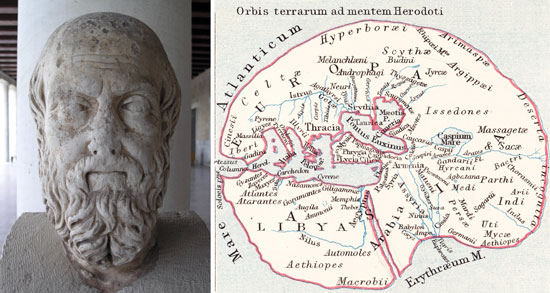
The world according to Herodotus. On the left, bust of Herodotus, second century AD Roman reproduction of a Greek original. On the right, reconstruction of the Greek historian’s Oikoumene. Herodotus view was one of an observer who wanted to testify to what he saw faithfully, without getting carried away and idealizing it in a vein of fantasy, nor branding it with the ethnocentric prejudice that inevitably shadows every traveller. Museu de l’Antiga Àgora d’Atenes / Mètode
Herodotus’ vision was that of an observer who wanted to pay witness to what he saw faithfully, without getting carried away and idealizing it in a vein of fantasy, nor branding it with the ethnocentric prejudice that inevitably shadows every traveller. Even so, he was harshly criticized by Aristotle (for his excessive credulity when he wrote about what he had not personally seen) and Plutarch (for his excessive condescension when writing about the «barbarians» and criticism of the Greeks).
Just when some Renaissance humanists (Lorenzo Valla, Matteo Palmieri, Henri Estienne) set out to «restate» him, fellow travellers, some from the east and others from the west, started to emulate him, without knowing anything of his writings. Between the years 1407 and 1433, in the east, Admiral Zhen He (1371-1434) made seven naval expeditions with fleets of large wooden ships, travelling across the Indian Ocean (the Western ocean for the Chinese) and along the eastern and southern coasts of Africa. In fact, according to some reports, they even rounded the Cape of Good Hope and sallied up the Atlantic coast of southern Africa. Ma Huan (c. 1380-1460), who accompanied Zhen He as a translator, kept careful notes on the geography, weather and environmental conditions, economy, customs, traditions and political systems of the countries visited. They were later compiled in a book entitled Ying-yai Sheng-lan (The Overall Survey of the Ocean’s Shores), which was to enjoy widespread readership, both in the original manuscript and the later printed version (Needham, 1995).
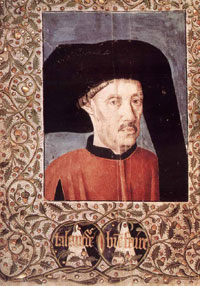
Henry the Navigator turned Cape Sagres in the Algarve (where he lived as of 1413) into a meeting place of astronomers, cartographers and sailors. He supported all naval expeditions along the African coast until his death. Bibliothèque Nationale de Paris
Zhen He’s naval expeditions were contemporary to the first voyages made by the Portuguese naval expeditions sponsored by the Portuguese prince Infante Dom Henrique, Duke of Viseu, better known as Henry the Navigator (1394-1460), sailing beyond Bojador Cape and venturing out along the western coast of Africa. Henry the Navigator hardly sailed himself, but turned Cape Sagres in the Algarve (where he lived as of 1413) into a meeting place of astronomers, cartographers and sailors. Until his death he supported all naval expeditions along the African coast, which reached Cape Verde Islands and the current Sierra Leone during his lifetime (Parry, 1981).
Portuguese sailors succeeded in reaching India by sailing around the African continent, since Turkish expansion in the eastern Mediterranean had disrupted existing traditional trade routes. Paradoxically, one of the most amazing fruits to be reaped from progress in the Portuguese sailors’ art of navigation was to come from the opposite direction: Christopher Columbus’ discovery of America (from the European perspective, of course, the native inhabitants of the American territories had discovered and lived there for many centuries).
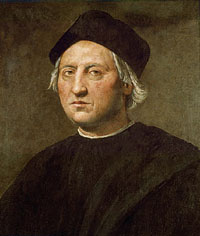
Portrait of Christopher Columbus. Columbus, imprisoned by old cosmographic knowledge, never realized the true dimension of his discoveries. Ridolfo Ghirlandaio. Museo Navale di Genova-Pegli
In fact, Columbus had received most of his training as a navigator and cosmographer during his long stay in Portugal. After successive attempts to find aid from the Portuguese, French and British Crown for his plan to reach India by sailing westward, finally the Crown of Castile showed enough interest in his plan to fund a ship and two caravels, with which he set sail on August 3, 1492. This small fleet first went to the Canary Islands and thence -from La Gomera- delved further west, sailing with the trade winds that led them directly to the Bahamas, where they landed on October 12, 1492 on the island now called Watling, but which Colombus named San Salvador. From there, sailing from island to island, they reached the coast of Cuba, which he mistook for the land of the Great Khan, and later on to Santo Domingo (Hispaniola).
Columbus, imprisoned by old cosmographic knowledge, never realized the true dimension of his discoveries. Indeed, it was not until 1499 when Alonso de Ojeda and Amerigo Vespucci sailed around the southern coasts of America from Surinam to the current Gulf of Maracaibo, and shortly after Pedro Álvares Cabral on his way to India, in 1500, set foot in the easternmost part of current Brazil, was it finally concluded that this land mass had nothing to do with East Asia, but was in fact a «fourth continent». Thus, in 1507 when the German cartographer Martin Waldseemüller represented a new continent on a map in the western Atlantic Ocean, separated from Asia, he did not name it after its discoverer, but instead the first person whom he believed to have understood the true significance of the discovery: Amerigo Vespucci (Favier, 1991).
«One of the most remarkable fruits to be reaped from the Portuguese sailors’ art of navigation was to come from the opposite direction: the discovery of America»
From adventure to scientific expedition
Without doubt these trips contributed greatly to expanding current knowledge of geography, and of plants and animals never before seen in Europe. Light was shed on unknown peoples and civilizations; however, the primary targets of these journeys were not scientific, but commercial and political, and therefore many of these discoveries were kept secret. Francisco Hernández, doctor to the court of Felipe II, led an expedition to Mexico, which was the first specifically devised to study the natural productions of the American lands and their applications, including medicinal uses (1571-1576). From 1571 to 1574 he extensively travelled the territories then controlled by the Viceroyalty of New Spain, collecting specimens of flora and fauna gathering information about the many medicinal applications of the plants harvested. He spent a great deal of time checking some of these applications and writing up a report on «natural things» of the New World (Pardo Tomás, 2007).
The following centuries paid witness to expeditions with avowedly scientific aims (although they almost always combined these with economic or political goals) promoted by European sovereigns (or powerful trade companies). A succession of wise travellers visited the American lands, the eastern Mediterranean, South and South East Asia, the African coasts and the lands of northern Asia that the Russians had begun to colonize.
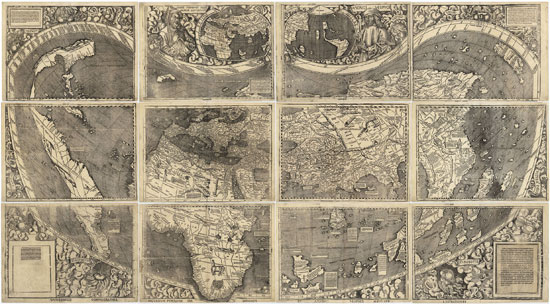
In 1507 when the German cartographer Martin Waldseemüller represented a new continent on the map in the western Atlantic Ocean, separated from Asia, he did not name it after its discoverer, but the first person whom he believed to have understood the true significance of the discovery: Amerigo Vespucci. Martin Waldseemüller
The eighteenth century in particular saw a rise in these expeditions. Joseph Pitton de Tournefort ventured to explore the east Mediterranean, Anatolia and Transcaucasia (1700-1702) in order to study the flora, as well as to provide information to his sovereign, Louis XIV, concerning the Ottoman Empire. His successor in the Jardin du Roi in Paris, Antoine de Jussieu, undertook a journey that mirrored the former’s but which took him to the other end of the Mediterranean, the Iberian Peninsula (1716-1717), on which he was accompanied by Joan Salvador Riera, an apothecary from Barcelona. You can read more about this expedition in the article by Folch.
After 1725, when Peter the Great set up the Russian Academy of Sciences in St. Petersburg, scientific exploration began of the Asian territories of the Russian Empire and in particular the Arctic ocean coasts, which culminated in the discovery of the Bering Strait (1729) and the coasts of Alaska (1741) by the Danish sailor Vitus Bering and his crew (Simtchenkoet et al., 1995). Meanwhile, on land, the German naturalist Johann Georg Gmelini and the German geographer and historian Gerhard Friedrich Müller, studied the flora and fauna, history, languages and ethnography of the territories that they crossed between 1733 and 1743. Years later, between 1769 and 1774, Peter Simon Pallas expanded knowledge of the Siberian flora and fauna.
Between 1734 and 1743 expeditions to Lapland and Peru were organized by the Parisian Academy of Sciences, as recounted in the article by Josep Batlló. Similarly the Spanish Crown commissioned successive botanical research expeditions between that time and the end of the century, in an endeavour to make an inventory of their possessions in America. These journeys are dealt with in the article by Antonio González Bueno.
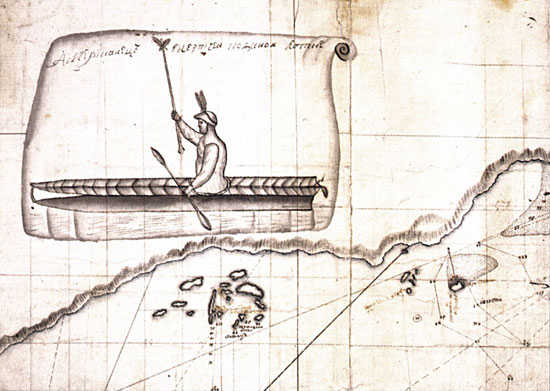
After 1725 scientific exploration began of the Asian territories of the Russian Empire and in particular the Arctic ocean coasts, which culminated in the discovery of the Bering Strait (1729) and the coasts of Alaska (1741). The picture, drawn during an expedition led by the Dane Vitus Bering, shows part of the southern coast of the Aleutian Peninsula (Alaska ) with an Aleut spearing fishing from a kayak. Sven Larsson Waxell
From 1740 to 1744 Commodore John Anson led a mission on the ship Centurion, which was primarily a military operation against Spanish interests in America and the Pacific (attacking the Manila galleon among other Spanish ships). Circumnavigation of this region opened the way for scientific expeditions to explore the Pacific. John Byron 1763 to 1766; Samuel Wallis 1766 to1768; Louis-Antoine de Bougainville 1766 to 1769; and above all James Cook, who made three voyages ( 1768-1771, 1772-1775 and 1776-1780 ), although he did not return from the third (Grenfell, 1988). Nor did Laperouse (and his companions) manage to finish the journey they started in 1785, as their ship was wrecked on the coast of the island of Vanikoro, Santa Cruz archipelago, now eastern province of the Solomon Islands. Then, at the end of the century, the Spanish Crown commissioned the Tuscan sailor Alessandro Malaspina, who was accompanied by José de Bustamante, to lead an expedition to explore the western coasts of North America, from Mexico to Alaska, and many of the Pacific Islands (Palau et al., 1984).
The first of these voyages set out to gather information of a geographical nature, expanding knowledge of the Pacific archipelagos; however, naturalist, botanists and astronomers never missed the chance to hop on board. For instance, Bougainville was accompanied by the botanist Philibert Commerson (and his lover, Jeanne Baret also a botanist, disguised as a man), the astronomer Pierre-Antoine Véron and the cartographer Charles Routier de Romainville. Similarly, two naturalists, Joseph Banks and Daniel Solander, joined Cook’s first voyage, as did the astronomer Charles Green, who wished to observe the transit of Venus in front of the Sun. Cook’s second voyage was joined by four naturalists, namely, William Anderson, Johann Reinhold Forster, Georg Forster and Anders Sparrman, and the astronomer William Wales, while the third carried naturalists William Anderson and William Ellis, together with the astronomer Joseph Billings (Taillemite, 2010).
Romantic travellers
After the American and the French revolutions, the relationship between science and power started to shift. Expeditions, like the one to Egypt forming part of Napoleon’s military campaign, or those undertaken by Meriwether Lewis and William Clark (both soldiers) in the regions of North America, west of the Mississippi, obeyed this new military logic, adopting language and practices rooted in military missions which subsequent expeditions would perpetuate.
«By the turn of the twentieth century very little of the earth’s surface was left to explore. The major european powers had divided africa between them, as well as the pacific islands and the indian ocean, colonizing large parts of asia and america»
However, the end of the Enlightenment saw a new type of explorer who did not seek power, but rather followed their own initiatives in an endeavour to expand existing knowledge and achieve fame in the scientific arena. These were the Romantic travellers, whose archetypes are Alexander von Humboldt and his companion Aimé Bonpland, Charles Lyell and Charles Darwin. The article by Raimon Sucarrats explores this scientific facet of travel, although not all Romantic travellers (and there were many) had a scientific mission -or not solely scientific-. Let us recall the many curious Brits taking a grand tour of continental Europe or, like Lord Byron, went to fight for the freedom of Greece, or Goethe and his journey to Italy, subsequently imitated time and again by some of his countrymen.
Throughout the nineteenth century many of these idealistic travellers found support from the nascent geographical or scientific societies that brought together scholars from each specialty. Thus, René Caille travelled from Senegal to Timbuktu in 1828 and Mungo Park, Henri Duveyrier, Richard Burton and John Speeke undertook their journeys to Africa with the support of the Royal Geographical Society or the African Association (Ricard, 2000). Others, meanwhile, fitted in with other official expeditions, often with a colonialist purpose or for reasons of national scientific prestige. Examples include the United States Exploring Expedition (1838 ) led by Charles Wilkes; the Commission d’Exploration Scientifique d’Algèrie (1839-1842 ) led by Jean-Baptiste Bory de Saint-Vincent, or that led by Alexander von Middendorf in the Russian Arctic (1842-45 ), or Challenger, the British ship that sailed the oceans worldwide (1872-76) (Linklater, 2003). The «travelling collector» is another figure characteristic of that epoch: keen naturalists, archaeologists, anthropologists and linguists, who made many discoveries and helped to establish important public and private collections upon which many museums have been built.
Twentieth-century travellers
By the turn of the twentieth century, very little of the Earth’s surface was left to explore. The major European powers divided Africa between them, as well as the Pacific islands and the Indian Ocean, colonizing large parts of Asia and America. Emerging powers such as the United States and Japan joined in the colonialist party. Just a few small regions of central Africa, the interior of New Guinea or the Amazon remained a mystery to science, along with much of the polar region, the highest mountain peaks and the abyssal ocean depths. Some daring individuals started the systematic exploration of caves and potholes and, thus science brought us the new sport known as caving.
The invention of the automobile and the birth of aviation opened up new prospects. Here was a fresh challenge, again carried along by technology and sport. What mattered was not so much where you went but to design and build contraptions and see how far or fast they were able to go. In fact, by 1910 the car rally between Peking and Paris had already been run (1907), so too the journey from New York to Paris, crossing North America and Siberia (1908), and the first flight across the English Channel (Louis Bleriot, 1909) and the Alps (Jorge Chavez Dartnell, 1910).
Indeed, research expeditions to remote or dangerous spots, far from the academic centres concerned, have only been hampered by the numerous political conflicts characterizing the twentieth century (and the way we are going, maybe the 21st century too). Individual adventures have been displaced by those organized by research groups, who enjoy more or less ample support. Furthermore, the latter half of the twentieth century saw the development of what we could call scientific tourism: safaris to photograph the wildlife in Africa or elsewhere; organized sightings of whales and other cetaceans; bird spotting (especially rare specimens); visits to natural parks and trips to see eclipses and other natural phenomena have become commonplace. There are even organized tours to visit the places where renowned scientists lived or worked. In fact, some remote and inhospitable settings, like the Antarctica, are receiving so many visitors that scientists are beginning to worry about the impact.
 SINC/NASA The era of space travel culminated in the first Moon landing. Neil Armstrong set foot on the Moon on July 21, 1969. |
|
The last frontiers Travellers wishing to reach the North and South Poles of the Earth have found the hostile environments of the Arctic and Antarctic ice caps difficult to overcome (Imbert, 1992). In 1773, the hypothesis of an open polar sea beyond latitude 80° N encouraged a British expedition commanded by Constantine Phipps, carrying a naturalist and an astronomer on board. However, thick ice forced them to retreat when they had barely exceeded 80° north of Svalvard. The voyages of William Edward Parry (1823) and Adolf Erik Nordenskjöld (1861) met with a similar fate. The ill-fated expedition of Sir John Franklin (1845), which went missing, had a huge impact –although it was not the only one to end in disaster–, inspiring Jules Verne’s novel The Adventures of Captain Hatteras. But the real conquest of the North Pole did not come about until the twentieth century when it was reached on April 6, 1909 by the American Robert Peary, accompanied by the African American Matthew Henson and four Inuits: Ootah, Seeglo, Egingwah and Ooqueah. The Antarctic continent was unknown until 1820, when it was sighted for the first time by the Estonian Fabian von Bellingshausen, admiral of the Russian empire. However, until 1840 there was no agreement on whether it was a single landmass and whether it was still possible to navigate right up to the Pole. James Clark Ross, after mapping much of the Antarctic coast, thought it was possible to reach the Pole by the sea that now bears his name. In 1841 he failed to cross the ice barrier that now bears his name too. The first unsuccessful attempts to reach the South Pole from the Antarctic coast were undertaken by Robert Scott and Ernest Shackleton (1901-04). Shackleton tried again but was unsuccessful once more in 1909 and Scott tried in 1911. Scott reached the South Pole only to find Roald Amundsen had got there 34 days before him. On the return trip Scott and his companions perished of cold and hunger. Once the Poles had been conquered, on Earth ventures into the unknown were restricted to the highest mountains, the deepest oceans and the outer layers of the atmosphere. Protagonists who managed to overcome two of these frontiers were the Swiss twins Auguste and Jean Piccard. Between 1931 and 1934 in a series of balloons equipped with a pressurized cabin, they broke altitude records. In 1934, Jean and his wife Jeannette exceeded 17,550 metres, flying the stratosphere above Lake Erie. The same year, the American zoologist William Beebe descended to a depth of 923 metres in the Atlantic Ocean with a widget, the Bathysphere, similar to Piccard’s pressurized cabin but much heavier, lowered into the ocean on a steel cable. This inspired Auguste Piccard to design a device capable of navigating at great depths, but it could not be built until after World War II. Once they had designed and built a device that was fully operational at great depths, on January 23, 1960, the Trieste bathyscaphe reached a depth of 11,000 metres under the sea in the Pacific Ocean’s Mariana Trench (Camarasa, 1994). From this point on, challenges lay outside the planet Earth. The era of space discovery began in the sixties starting with the Russian Iuri Gagarin, who was the first to orbit the Earth (April 12, 1961) and culminating when the American Neil Armstrong was the first to set foot on the Moon (July 21, 1969). From that date until December 1972, eleven more astronauts were to set foot on the moon, but no-once has returned since then. J.M.C. |
Bibliography
Boardman, J., 1988. The Greeks Overseas. Their Early Colonies and Trade. Thames and Hudson. London.
Camarasa, J. M., 1994. «El somni dels Piccard». In Folch, R. and J. M. Camarasa (dirs.), 1994. Biosfera (vol. 10). Litorals i oceans. Enciclopèdia Catalana. Barcelona.
Favier, J., 1991. Les grandes découvertes. D'Alexandre à Magellan. Fayard. Paris.
Grenfell, A., 1988. Los viajes del capitán Cook (1768-1779). Ediciones del Serbal. Barcelona.
Imbert, B., 1992. North Pole, South Pole: Journeys to the Ends of the Earth. Harry N. Abrams. New York.
Linklater, E., 2003. El viaje del Challenger (1872-1876). Ediciones del Serbal. Barcelona.
Needham, J., 1995. The Shorter Science and Civilisation in China: 3. Cambridge University Press. Cambridge.
Palau, M.; Zabala, A. and B. Sáiz (eds.), 1984. Viaje político y científico a la América Meridional, a las costas del mar Pacífico y a las Islas Marianas y Filipinas. El Museo Universal. Madrid.
Pardo Tomás, J., 2007. «Francisco Hernández (1515?-87). Medicina e historia natural en el Nuevo Mundo». In Fundación Canaria Orotava de Historia de la Ciencia, 2007. Los orígenes de la ciencia moderna. Actas año xi y xii. Consejería de Educación, Cultura y Deportes del Gobierno de Canarias. Santa Cruz de Tenerife.
Parry, J. H., 1981. El descubrimiento del mar. Crítica. Barcelona.
Ricard, A. (ed.), 2000. Voyages et decouvertes en Afrique. Robert Lafont. Paris.
Simtchenko, J. B.; Junyent, C. and J. M. Camarasa, 1995. «El poblament humà de la tundra». In Folch, R. and J. M. Camarasa (dirs.), 1995. Biosfera (vol. 9). Tundra i insularitat. Enciclopèdia Catalana. Barcelona.
Taillemite, É., 2010. Les découvreurs du Pacifique. Gallimard. Paris.

